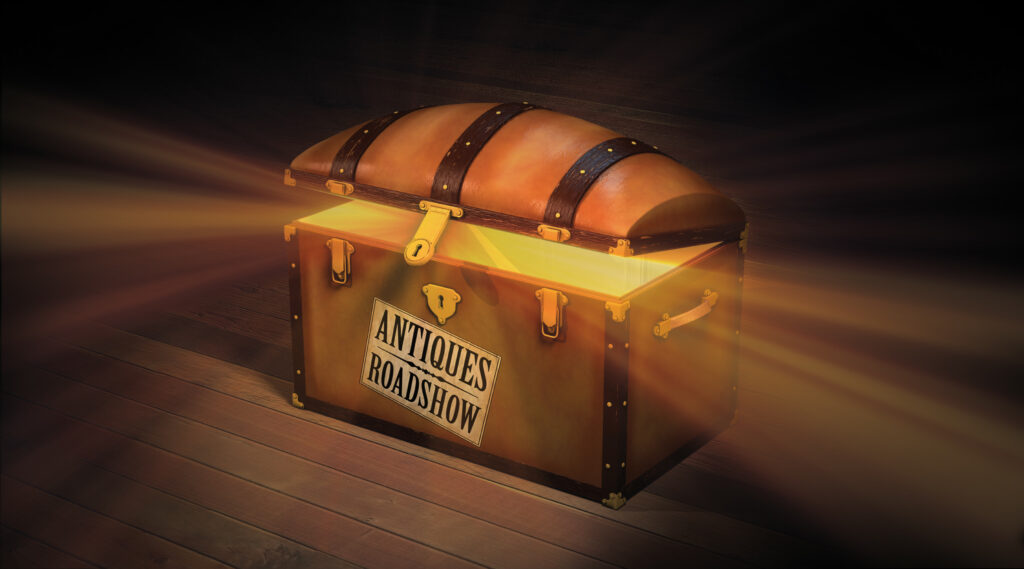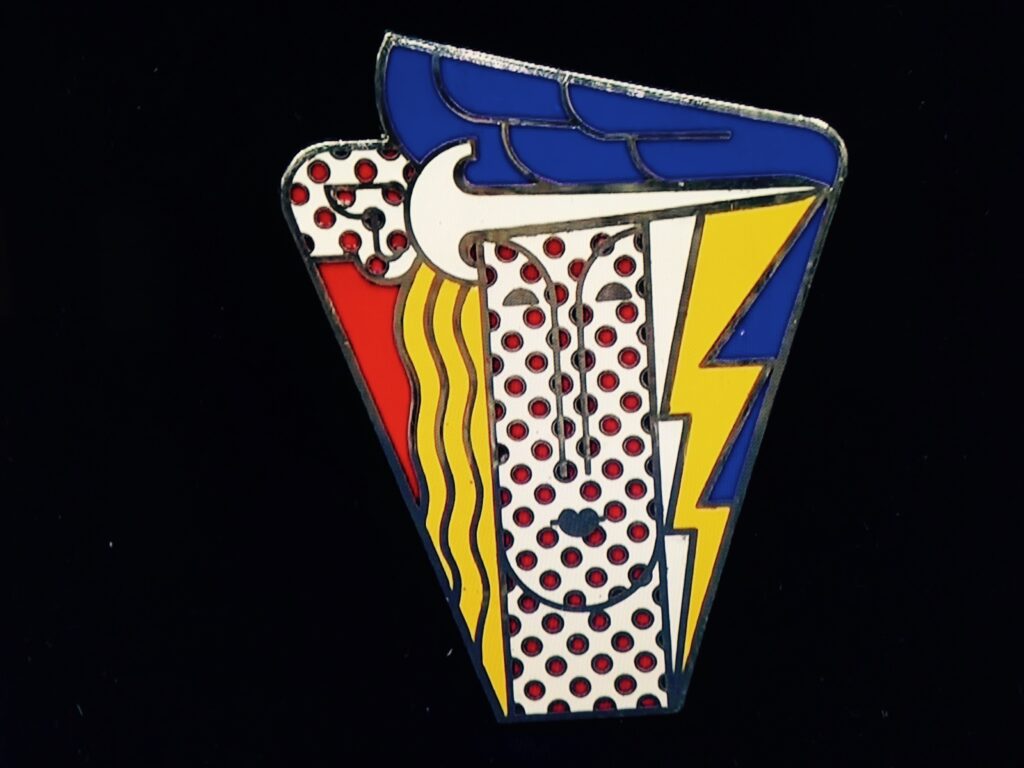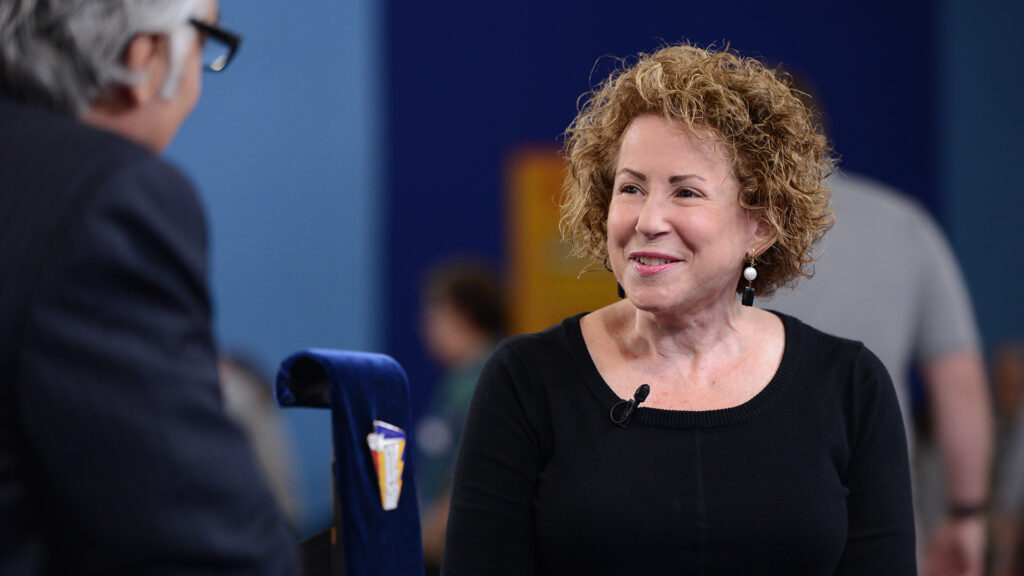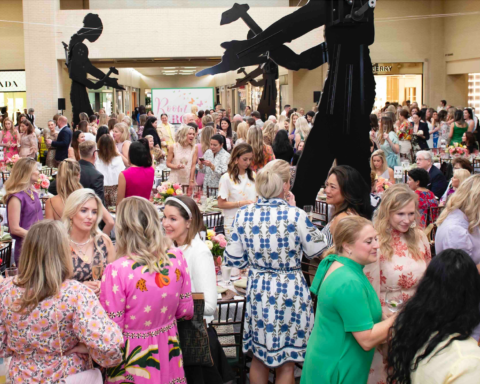Ever wondered how it feels to appear on the hit PBS series, Antiques Roadshow? Join our cool culture chaser Dee Covey as she takes us backstage for an inside look at the successful show… with a collector who discovered her heirloom was truly valuable. Photography courtesy PBS

“Oh My God, Uncle Mickey gave me a Lichtenstein,” marveled teenage Deborah Leeb when she received a vivid 1968 pop art pin as a high school graduation present.
Apparently that’s what appraisers and producers of PBS’s wildly popular Antiques Roadshow thought, too, when they featured the sparkly-eyed transplanted Texan and her museum gift shop keepsake on the show that was shot at the Austin Convention Center.
“On a lark, we threw our name into the ring in April,” says husband (and lively history professor) Dr. Robert Marshall, Deborah Leeb Marshall’s husband, about the first step in the gating process: Signing up for the online lottery to win a pair of tickets. “We thought a few hundred people would be there, tops.”
Answering a cattle call of 7,000 lottery winners (out of an estimated 25,000 entries), the avid Roadshow fans were emailed to bring up to two items each for free expert appraisal. The Marshalls leapfrogged their best modern lithographs, and chose two pre-Columbian vessels, a Tao Kuang screen, and, luckily, the Roy Lichtenstein pin that sits on Deborah Marshall’s nightstand.
SHOWING & TELLING
“It was a giant Show-and-Tell of stuff,” Deborah Marshall said of the colossal weekend production to unearth fifty tantalizing treats for three hour-long Austin segments. The edge-of-your-sofa PBS reality show draws people from all social strata, eager to see whose junk drawer, trinket box or mantle yields hidden treasure.
About seventy five appraisers sifted through over 10,000 wacky-to-wondrous heirlooms and objects d’art, ranging from an African fertility helmet (As a kid, “I remember runnin’ around with it on my head,” chuckled its owner) to a luminous Van Cleef and Arpels diamond tassel necklace pegged at $125,000—originally bought for $5,700 by the owner’s parents in Abilene.
While the Marshalls snaked through efficient Disneyland-worthy sorting lines for specific categories—such as jewelry, paintings, and sports memorabilia—a lucky few, such as notable architect Philip “Pepper” Paratore of Houston, scored a rare VIP ticket for swifter winnowing. “There’s no way to predict what they’ll want that day,” says Paratore, who simply took one unusual curiosity he picked up at an estate sale. “Who knows what they’ve already seen?”
Volunteer appraisers fly in from all over the country on their own dime, to help PBS tell the story of our collective culture through attic booty and hand-me-downs. It’s anybody’s guess who will land on the sensational sweet spot between hope and history, now in its 19th season.
PINS & NEEDLES
When Deborah Marshall was suddenly cut from the diminishing herd, she sat down with expert Kevin Zavian from the prestigious Doyle Auctioneers and Appraisers in New York.

“Kevin lit up in two minutes,” she said. To confirm his hunch, Zavian said little before whisking the polychrome enamel pin away to bone up online on background, details, authenticity and auction and insurance value, and confer with other experts. He returned beaming, with a woman in tow. (Appraisers compete for airtime, too, and pitch only the best candidates to producers. They hit gold when they come upon the one or two fascinating finds, and an owner who can quickly deliver an appealing personal back story.)
“My favorite aunt and uncle collected the best of California Contemporary art through the 70s,” Deborah recalled, about Ruth and Murray Gribin of Los Angeles’s Holmby Hills, who gave the fledgling U.C.L.A. art history major the pin as a special token of a shared passion. “All I knew was that they got it in New York on a buying trip.”
By then, Zavian had plenty of tasty morsels about the artist, era, and production details (Benday Dots, anyone?), which provide spice to Roadshow’s must-see TV. Fortunately, Deborah was also wearing a lovely lens-friendly black top. (Note to future stars: Solid whites are a camera no-no.)

IT’S SHOWTIME
“You’re on!” the female producer said before rushing off, and Deborah became one of the eighty people sent to makeup and filmed by a dozen cameras in several staging areas. Soup to nuts, the process only took an hour after the green light, she says.
The Austin shoot also included Paratore’s swordfish and patriot-themed painted wood saber, which turned out to be an authentic 1870s-era folk art piece. “Man, you’re a lucky duck,” said auctioneer Ken Farmer of Charleston, when he pointed out its astonishing characteristics which made it worth at least ten times more than its owner paid for it.
While some are hustled to the quick take “Feedback Booth” to show off old maps, oils and dolls, Dr. Marshall had a more typical bubble-popping experience (“I was chopped liver,” he jokes), but says he had a terrific time anyway. He got to view the whole shebang from a monitor backstage in the special Green Room.
In a single take, the Roadshow crew captured Ms. Marshall’s delighted heartfelt reaction to Zavian’s happy news that the original twenty-five buck Roy Lichtenstein memento likely hailed from the Museum of Modern Art and would fetch a $5,000 bonanza at auction.
“The whole team was excited and congratulatory afterwards. It was really fun!” the former energy finance executive and successful entrepreneur said.
Like many participants, though, the Marshalls aren’t really interested in selling her token of familial love, which Deborah wears for special occasions and enjoys daily. They simply wanted affirmation… and to see how the Antiques Roadshow secret sauce was made.
“It’s fabulous to know my pin has a monetary value,’ she says. “But to me, it’s priceless.”







